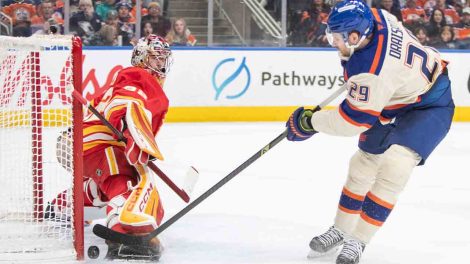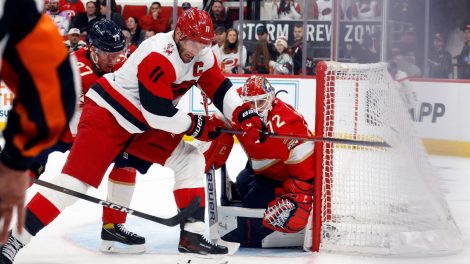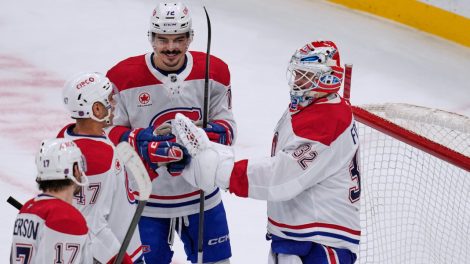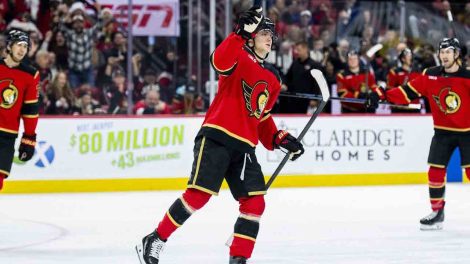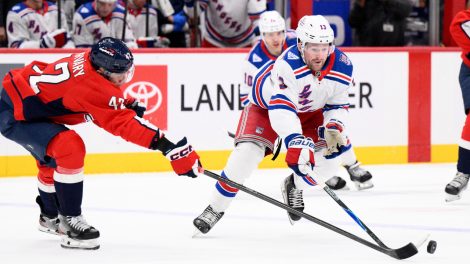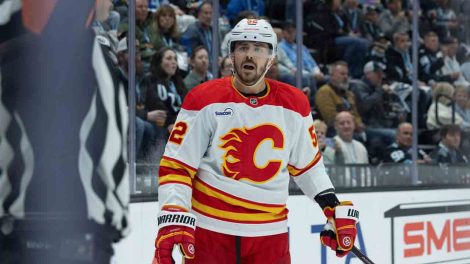VANCOUVER – This is supposed to be just the beginning for the Vancouver Canucks, the start of a sparkling new era as the team blasts towards the heavens on the twin booster rockets of Elias Pettersson and Quinn Hughes.
Instead, this summer’s Stanley Cup tournament could already become a kind of ending for this particular group.
There is no escaping the debilitating gravity of the NHL’s salary cap.
While the league and its players’ association have delivered peace with a negotiated extension of the Collective Bargaining Agreement during the worst pandemic in 100 years, no one was lighting sparklers and breaking into song while keeping six feet apart in the Canucks’ hockey-operations offices.
At least the salary cap won’t go down next season and, happily, commissioner Gary Bettman didn’t invent any new ways to hammer the Canucks retroactively for doing what had been entirely legal in the previous CBA. How, in the most litigious society on Earth, Bettman and owners got the Roberto Luongo cap-recapture penalty past NHLPA lawyers in 2012 is one of the great mysteries of our time.
But the Coronavirus Cap of $81.5 million — $2.5- to $6.7-million less than what deputy commissioner Bill Daly had forecast just the week before the NHL shut down on March 12 – could remain flat for a while and exacerbates what was already going to be a serious budgeting problem for the Canucks.
[snippet id=4931161]
Before we explain again how the cap threatens to flatten the Canucks’ curve upwards, let’s make two things clear: a lot of NHL teams are in the same leaky boat, and Vancouver didn’t get there because of COVID-19 but because of Loui Eriksson’s $36-million contract (and others).
Still, the Canucks were planning their cap gymnastics next season based on a modest increase in the salary cap for 2020-21 and the promise of greater escalation the season after. Instead, with a roster of 15 players under contract next season (16 if you include Sven Baertschi in the minors) at a cost of $65.2 million, including the bonus overage carried over from this season, the Canucks have only $16.3 million available for another seven or eight players. And at least two-thirds of that money could be spent on retaining unrestricted free agents Jacob Markstrom and Tyler Toffoli.
At least general manager Jim Benning saw this coming during the NHL shutdown.
“Of course, it’s going to be different,” he told Sportsnet in June. “So many things have changed. You have to be prepared and adapt to different changes that happen. There’s going to be some stuff that happens that teams are going to be mad at, but they don’t have a choice. This is just the way it is. I don’t know if it’s going to be any different in society.”
The NHL opens training camps on Monday and hopes to stage a Stanley Cup tournament this summer.
If it happens, it will be the only one the Canucks ever play with Pettersson and Hughes, J.T. Miller and Bo Horvat, Brock Boeser, Toffoli, Markstrom, Chris Tanev, Troy Stecher and Jake Virtanen.
Unless Benning convinces Eriksson, who projects to be a healthy scratch in the preliminary-round series against the Minnesota Wild, to terminate his contract in the off-season and walk away from $5 million, it looks plain impossible for Vancouver to keep all its important players.
Markstrom, Toffoli, Tanev and Josh Leivo are unrestricted free agents, and the RFAs include Stecher, Virtanen, Adam Gaudette and Tyler Motte.
Anchored by “dead money” in the Luongo penalty ($3.03 million), last summer’s buyout of Ryan Spooner ($1.03 million) and Baertschi’s NHL cap hit from Utica ($2.29 million) – all figures in this story are from CapFriendly.com – the Canucks could get some long-term injury relief if Micheal Ferland ($3.5 million) is unable to play next season due to concussion.
But Ferland, who missed 55 of the Canucks’ final 57 games, is in Vancouver for summer camp and will try again to come back.
The NHL’s financial landscape makes it almost impossible for the Canucks to offload contracts like Eriksson’s or Brandon Sutter’s ($4.375 million), although Benning may find a taker for depth defenceman Jordie Benn ($2 million).
Most of the realistic options to ease the cap crisis are difficult ones: choosing Markstrom or Toffoli, allowing veteran warrior Tanev to walk, making Stecher a UFA by not qualifying him at $2.35 million, or trading the 23-year-old Virtanen rather than nearly tripling his expiring salary of $1.25 million. The nuclear option would be to trade Brock Boeser and his $5.875-million salary, although thank goodness talk radio doesn’t possess the launch codes.
Pettersson and Hughes are due huge new contracts next summer. Boeser needs a new deal in 2022, Horvat and Miller the year after. Everyone can see there is a problem.
“You’ve definitely got to think about that,” Horvat said this week when asked about the looming cap crunch. “I wouldn’t want to have a head office job right now with the way the cap is. I think we’re going to do whatever we can to keep our core group together and our young guys. How we’re going to do it, I’m not sure, because we do have such great young talent. Hopefully, we can do something to keep us all together because we definitely have a bright future.”
[relatedlinks]

